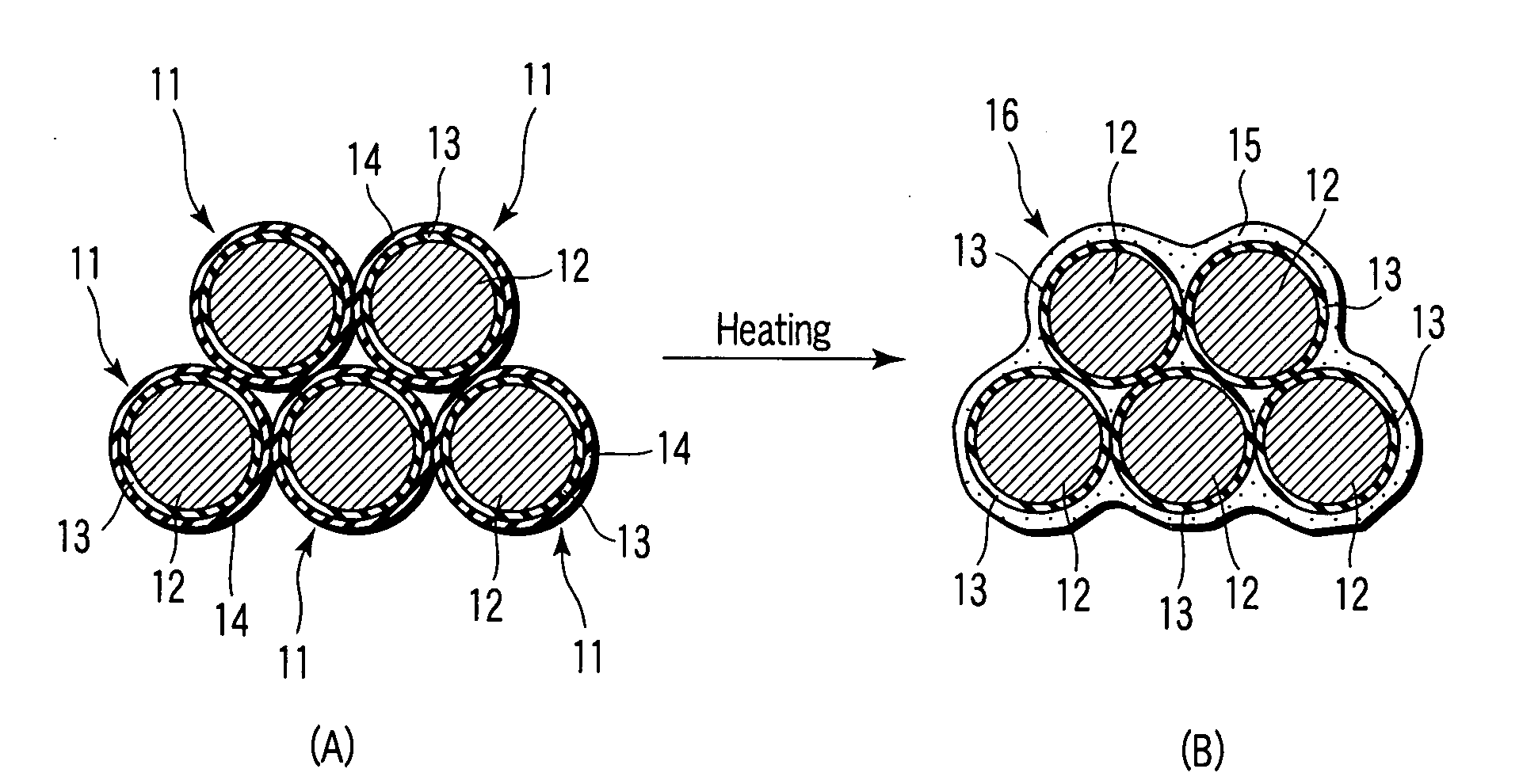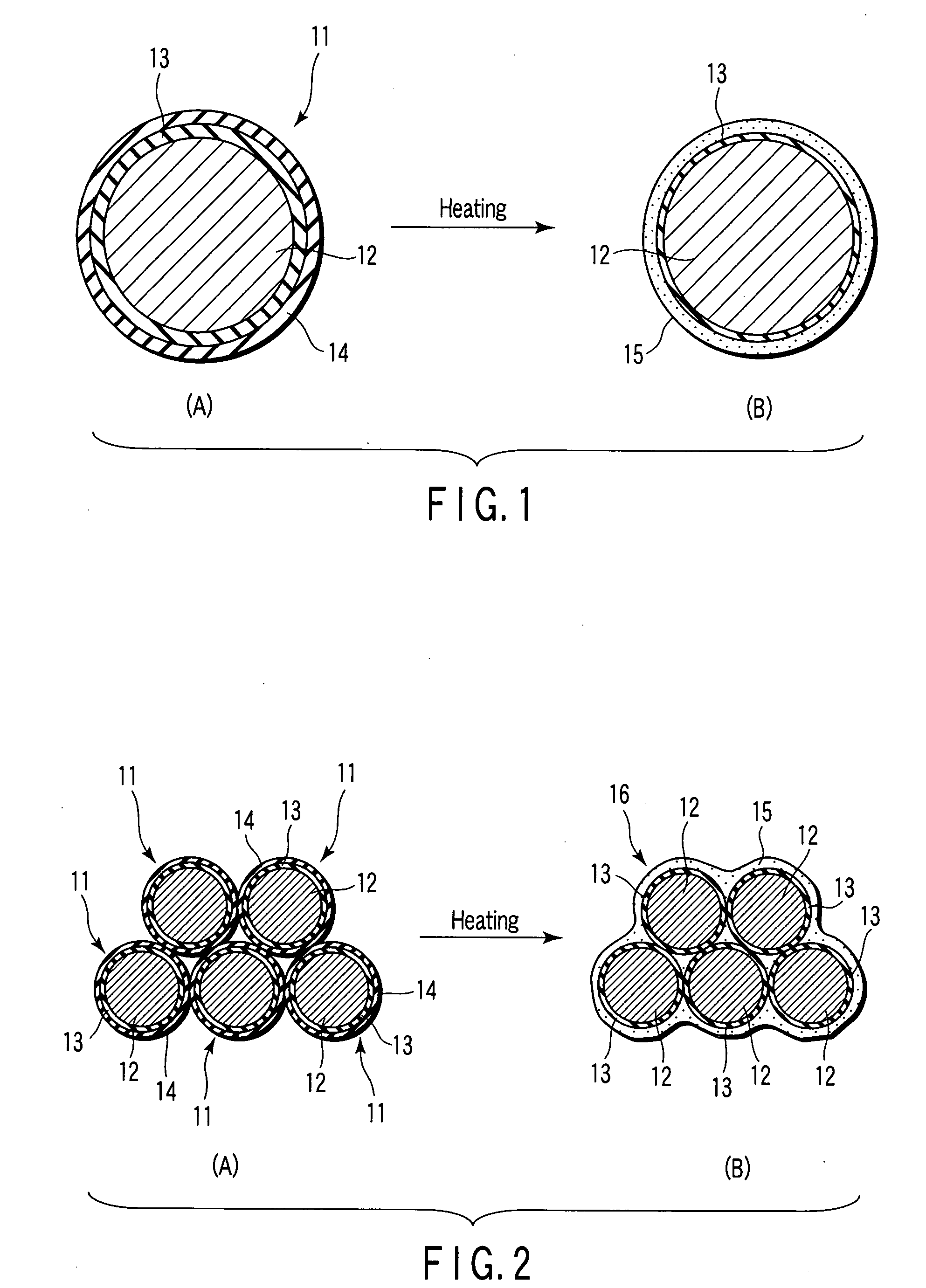Insulating magnectic metal particles and method for manufacturing insulating magnetic material
- Summary
- Abstract
- Description
- Claims
- Application Information
AI Technical Summary
Problems solved by technology
Method used
Image
Examples
example 1-1
[0067]Fe particles having a particle size distribution of 20 to 70 nm were immersed into a tetraethoxysilane [Si(OC2H5)4] solution to disperse them, thereby covering the surfaces of the Fe particles were covered with a silicide, and the Fe particles were sintered at 400° C. after drying the particles to form a first inorganic insulating layer made of SiO2 and having an average thickness of 4 nm. Subsequently, the Fe particles covered with the first inorganic insulating layer were immersed into a triethylborate [B(OC2H5)3] solution to disperse them, thereby covering the surface of the first inorganic insulating layer with a boron compound, and the Fe particles covered with the boron compound were sintered at 300° C. after drying the particles to form a second inorganic insulating layer made of B2O3 and having an average thickness of 4 nm. Thus, insulating magnetic metal particles having the Fe particles covered with the first and second inorganic insulating layers were fabricated.
[00...
example 1-2
[0073]An insulating magnetic material was manufactured in the same manner as in Example 1-1 except that the same Fe particles covered with the first inorganic insulating layer as that of Example 1-1 were immersed into a tri-(tertiary amiloxy) bismuth solution to disperse them, thereby covering the surface of the first inorganic insulating layer with a bismuth compound, and the covered particles were sintered at 400° C. after drying the particles, whereby a second inorganic insulating layer made of Bi2O3 and having an average thickness of 5 nm was formed to fabricate insulating magnetic metal particles being Fe particles covered with the first and second inorganic insulating layers.
example 1-3
[0074]An insulating magnetic material was manufactured in the same manner as in Example 1-1 except that the same Fe particles covered with the first inorganic insulating layer as that of Example 1-1 were immersed into a dis-(dipivaloyl methanate) lead solution to disperse them, thereby covering the surface of the first inorganic insulating layer with a lead compound, and the covered particles were heated at 400° C. after drying the particles, whereby a second inorganic insulating layer made of PbO and having an average thickness of 4 nm was formed to fabricate insulating magnetic metal particles being Fe particles covered with the first and second inorganic insulating layers.
PUM
| Property | Measurement | Unit |
|---|---|---|
| Thickness | aaaaa | aaaaa |
| Thickness | aaaaa | aaaaa |
| Thickness | aaaaa | aaaaa |
Abstract
Description
Claims
Application Information
 Login to View More
Login to View More - R&D
- Intellectual Property
- Life Sciences
- Materials
- Tech Scout
- Unparalleled Data Quality
- Higher Quality Content
- 60% Fewer Hallucinations
Browse by: Latest US Patents, China's latest patents, Technical Efficacy Thesaurus, Application Domain, Technology Topic, Popular Technical Reports.
© 2025 PatSnap. All rights reserved.Legal|Privacy policy|Modern Slavery Act Transparency Statement|Sitemap|About US| Contact US: help@patsnap.com


